Tom's Hardware Verdict
The Sandisk WD Black SN8100 is the pinnacle of SSD design, bringing fantastic performance and power efficiency in one nice package.
Pros
- +
Super fast Gen 5 SSD
- +
Top tier all-around performance
- +
Power-efficient
- +
Good capacity range
- +
Good features and support
Cons
- -
Pricing
Why you can trust Tom's Hardware
We’ve been waiting for a fast, efficient, and polished high-end PCIe 5.0 SSD for quite some time. The long wait is over as Sandisk delivers the goods with the excellent WD Black SN8100, a drive that just about defies all expectations. Anyone asking for the singular “best” SSD now has the definitive answer.
What makes this SSD so great? Aside from chart-topping performance in almost every category, including the all-important random read performance, it’s also one of the most efficient drives we’ve ever tested. Sandisk doesn’t skimp anywhere and even promises an 8TB SKU later this year, making it essentially impossible to find a better all-around drive. It’s an absolute achievement and easily our top recommendation if you have the ability to get it. It’s going to be overkill for most things, but sometimes that’s part of the fun.
Sandisk WD Black SN8100 Specifications
Product | 1TB | 2TB | 4TB |
|---|---|---|---|
Pricing | $179.99 | $199.99 | $279.99 | $299.99 | $549.99 | $599.99 |
Form Factor | M.2 2280 (SS) | M.2 2280 (SS) | M.2 2280 (SS) |
Interface / Protocol | PCIe 5.0 x4 NVMe 2.0 | PCIe 5.0 x4 NVMe 2.0 | PCIe 5.0 x4 NVMe 2.0 |
Controller | Silicon Motion SM2508 | Silicon Motion SM2508 | Silicon Motion SM2508 |
DRAM | DDR4 | DDR4 | DDR4 |
Flash Memory | Kioxia 218-Layer BiCS8 | Kioxia 218-Layer BiCS8 | Kioxia 218-Layer BiCS8 |
Sequential Read | 14,900 MB/s | 14,900 MB/s | 14,900 MB/s |
Sequential Write | 11,000 MB/s | 14,000 MB/s | 14,000 MB/s |
Random Read | 1,600K | 2,300K | 2,300K |
Random Write | 2,400K | 2,400K | 2,400K |
Security | TCG Opal 2.02 | TCG Opal 2.02 | TCG Opal 2.02 |
Endurance (TBW) | 600TB | 1,200TB | 2,400TB |
Part Number | WDS100T1X0M-00CMT0 WDS100T1XHM-00CMT0 | WDS200T1X0M-00CMT0 WDS200T1XHM-00CMT0 | WDS400T1X0M-00CMT0 WDS400T1XHM-00CMT0 |
Warranty | 5-Year | 5-Year | 5-Year |
The Sandisk WD_BLACK SN8100, henceforth referred to as the WD Black SN8100, is launching with the expected capacity range, covering 1TB, 2TB, and 4TB. However, Sandisk indicates that an 8TB SKU is expected later this year. This is a point in the drive’s favor, as 8TB remains desired by enthusiasts and is often a difficult capacity to hit. WD surprised us last year with its launch of an 8TB WD Black SN850X. The company nailed it with that model, and it has become the de facto choice if you want a fast 8TB drive. We are therefore optimistic that we’ll see a viable option here, hopefully in 2025 as promised.
Sandisk waited to bring out its answer to Phison’s early adopter E26 controller drives, and the performance specifications do not disappoint. The drive can reach up to 14,900 / 14,000 MB/s for sequential writes and up to 2,300K / 2,400K random read and write IOPS. While these numbers aren’t record-setting per se, Phison had to work very hard with its controller technology – creating the so-called Max14um SSD platform – to reach or surpass 14,000 MB/s. It’s fair to expect that the WD Black SN8100 can push these more consistently.
The drive supports hardware encryption through TCG Opal 2.02. Sandisk backs the drive with a 5-year, 600TB of writes per TB capacity warranty. This is pretty standard. Models are offered with and without heatsinks. The base versions come with suggested retail prices of $179.99, $279.99, and $549.99, with an additional $20 for the heatsink. In general, we recommend a heatsink for any drive of this caliber, and $20 is a fair price for an upgrade. If the WD Black SN8100 has one weak spot, it’s here in the pricing – these prices target the Samsung 9100 Pro and all but make it obsolete, true, but the Crucial T705 is still less expensive and still viable.
Sandisk WD Black SN8100 Software and Accessories
Sandisk is almost second-to-none in terms of its software and support. The drive comes with free downloads for Acronis True Image, an OEM version of the popular backup software for cloning and imaging, as well as the WD Dashboard. This all-in-one SSD toolbox has you covered for features, health information, firmware updates, and more. In this department, Sandisk has come a long way to matching Samsung’s Magician and software offerings, which makes the WD Black SN8100 feel like a premium product.
Sandisk WD Black SN8100: A Closer Look
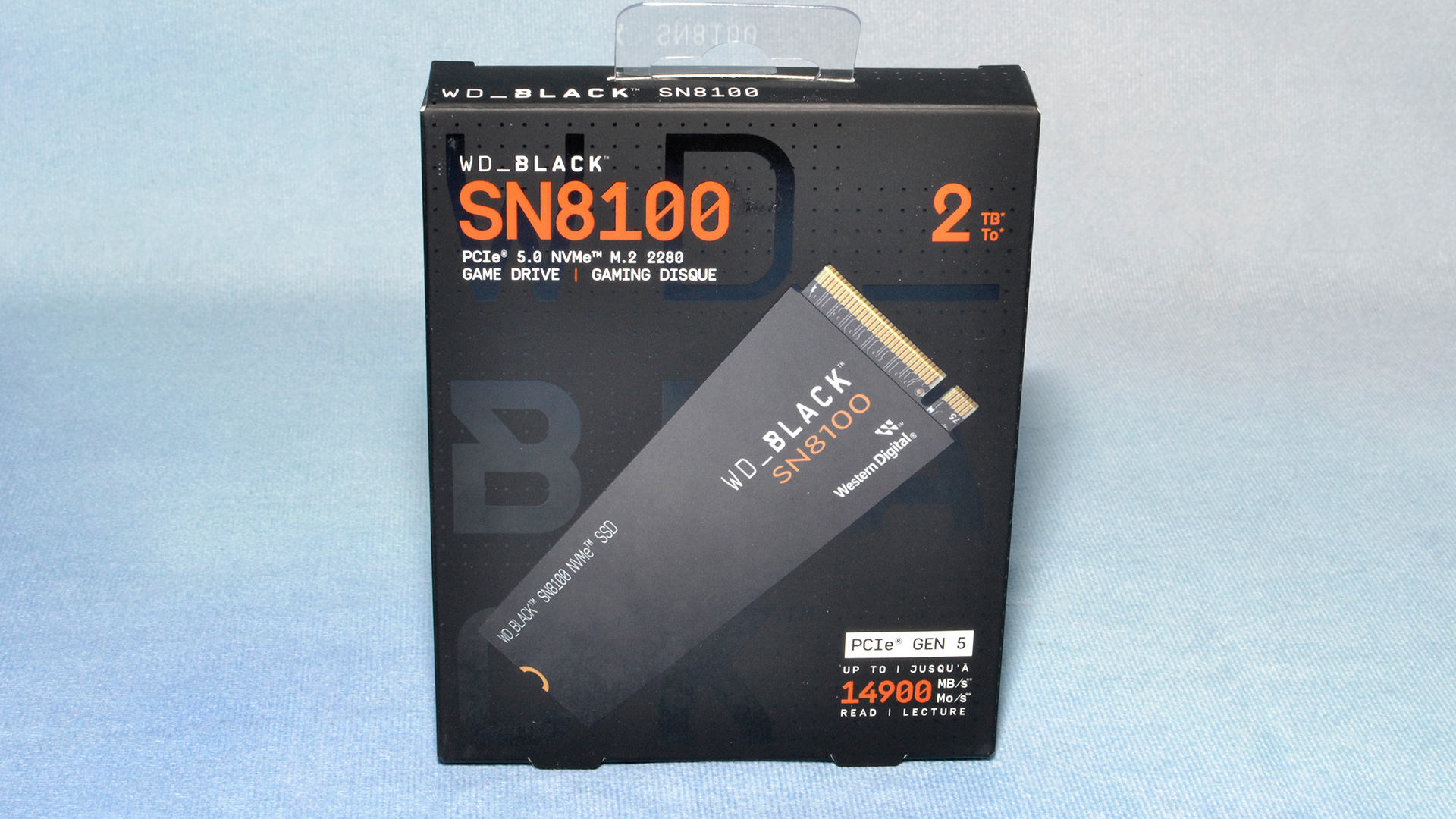
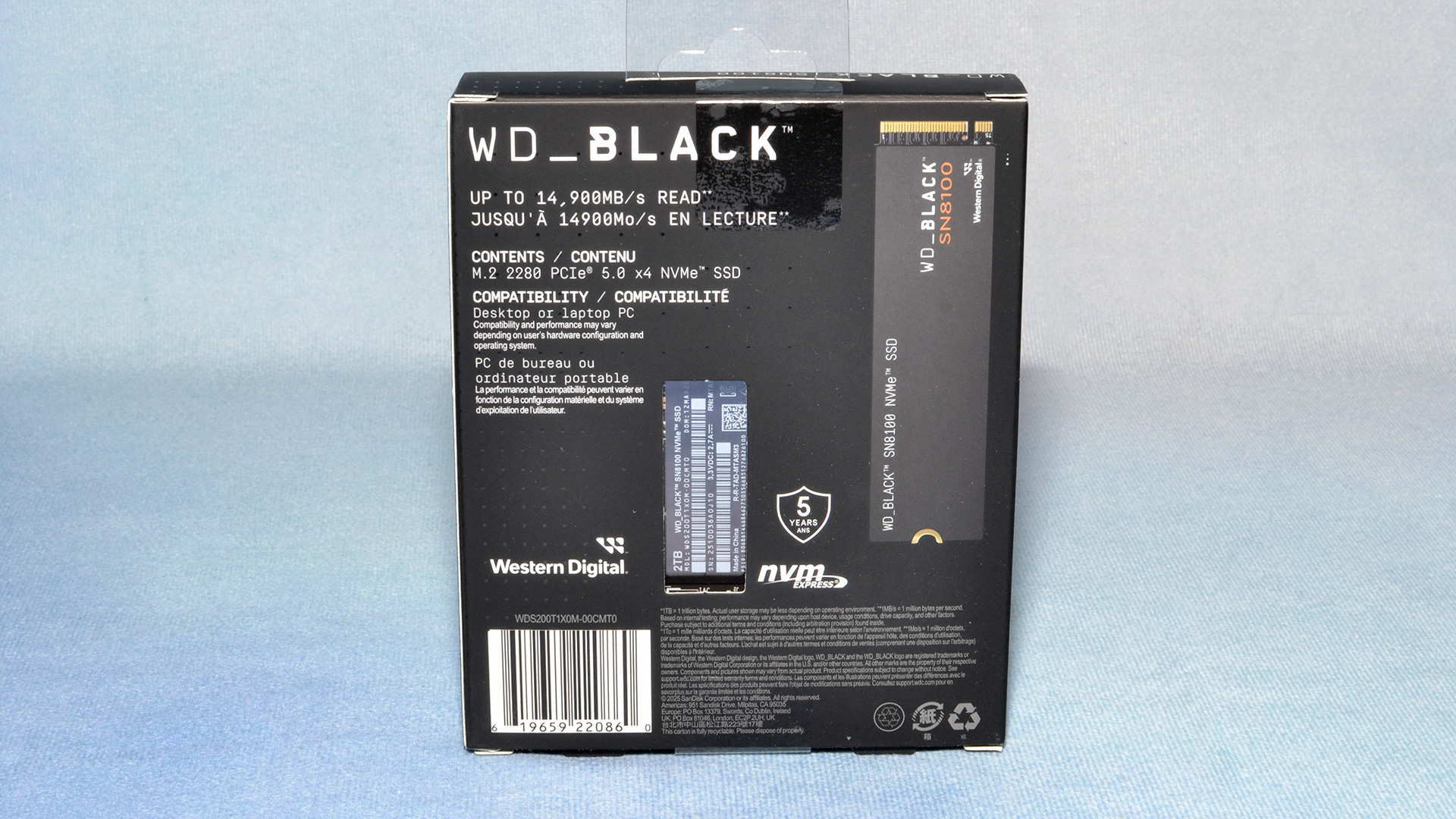
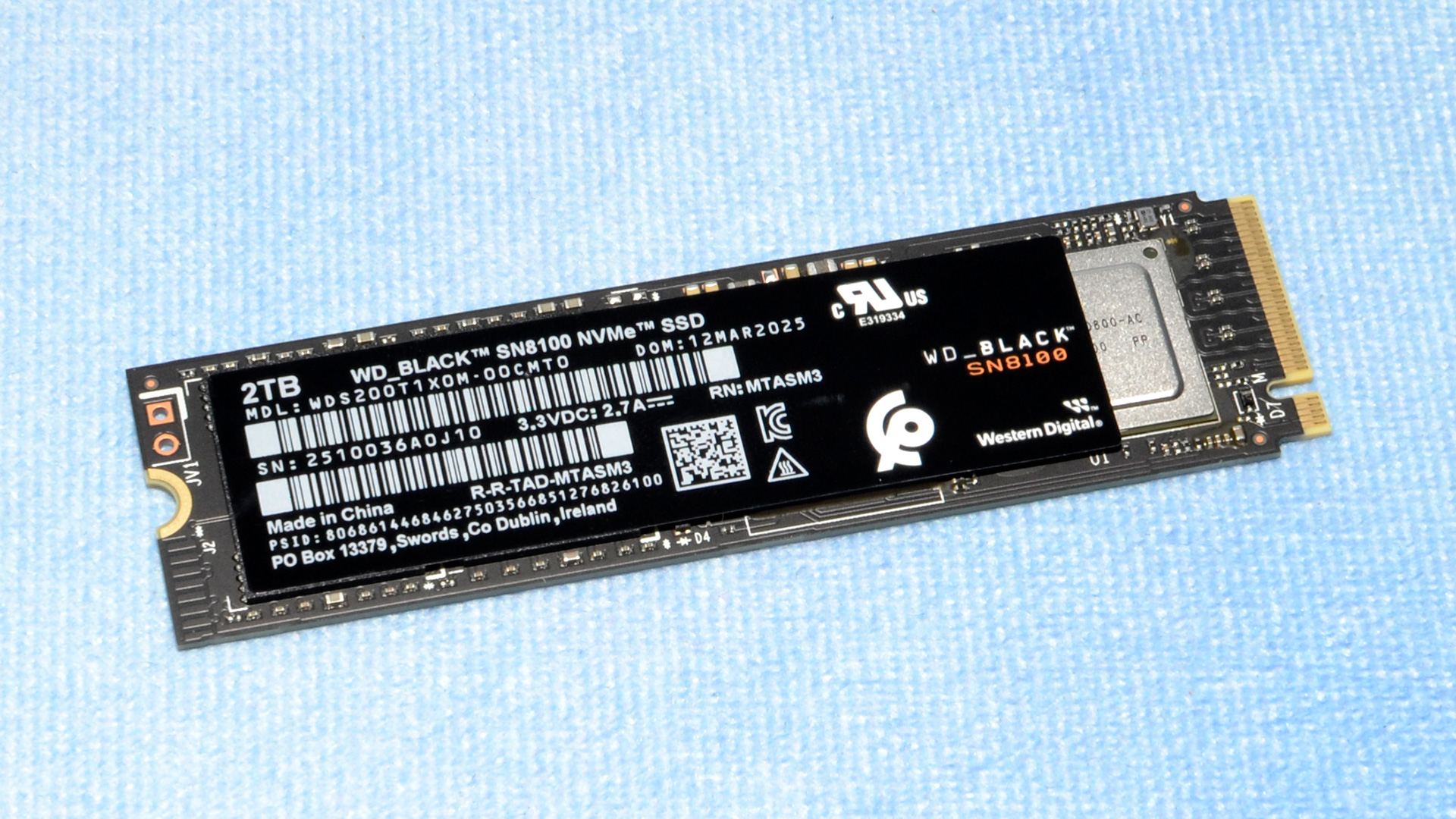
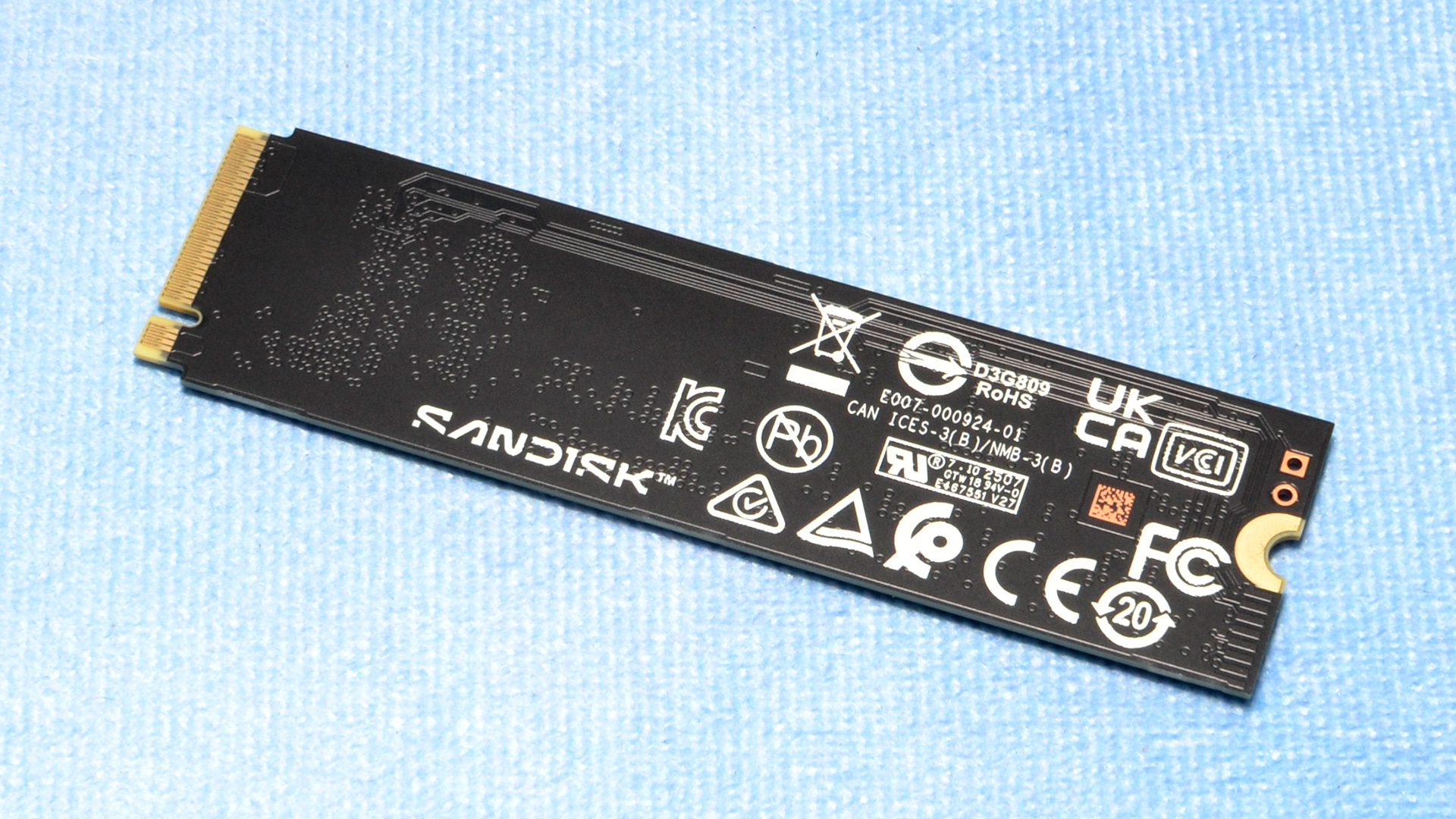
The WD Black SN8100 is single-sided at all of the launch capacities, which means it can be used in laptops and other devices that can’t fit some double-sided drives. This is a nice change from the 4TB Black SN850X, which is a double-sided drive. You had to go with the Samsung 990 Pro to get the highest level of performance from the last generation of drives if you needed a single-sided solution.
Get Tom's Hardware's best news and in-depth reviews, straight to your inbox.
As for this generation, drives have generally not been efficient enough for laptop use to be reasonable. Drives built on Silicon Motion’s SM2508 controller are an exception, but until today, the main example of that was the OEM Micron 4600. We’ve covered the hardware aspects of the controller in our previous preview and in the 4600 review, with a key takeaway that it can deliver maximum performance without the power consumption drawbacks.
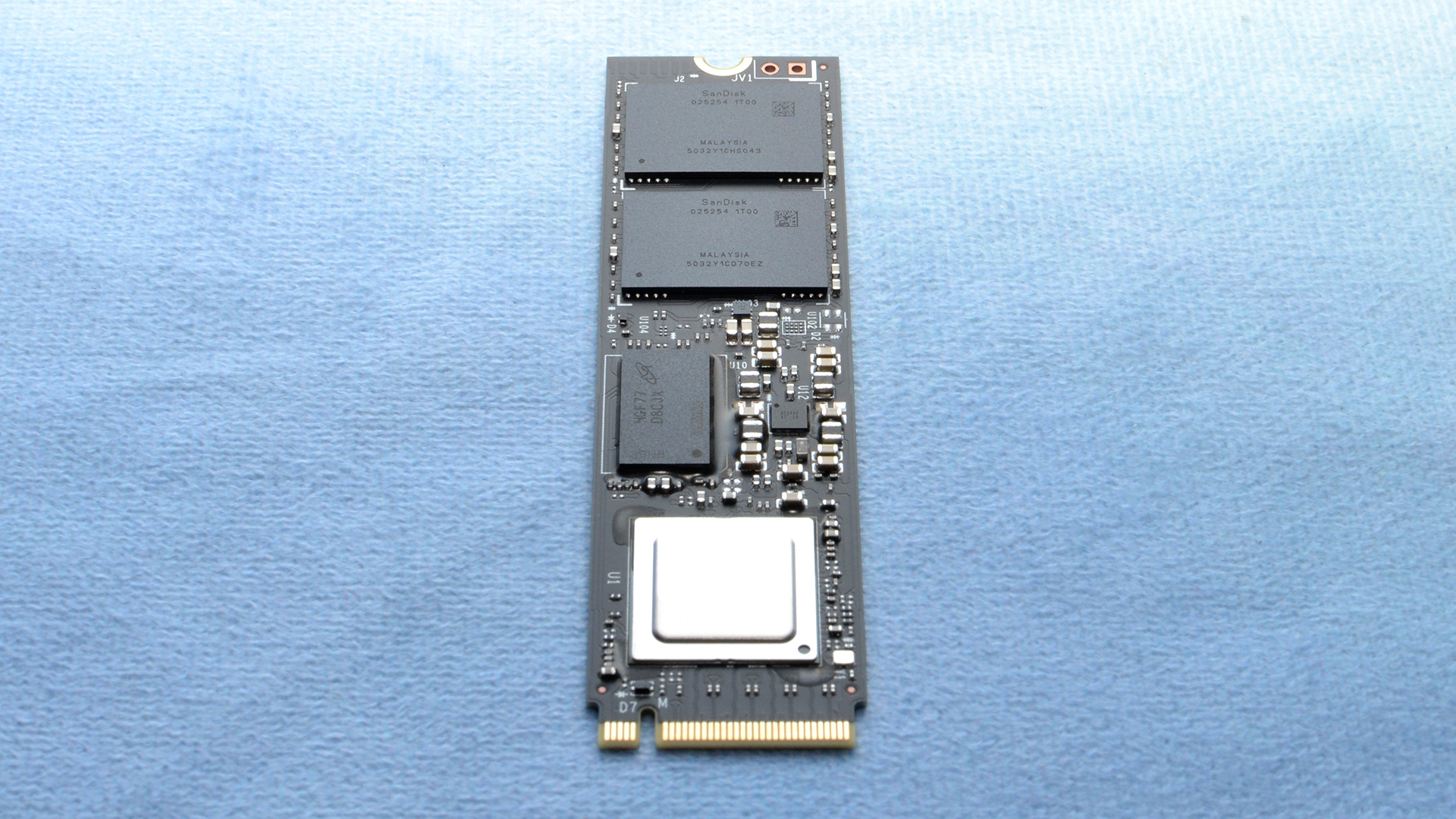
The WD Black SN8100 uses Kioxia’s 218-Layer BiCS8 TLC flash along with DDR4 memory for metadata caching. We’ve seen this flash before on the excellent WD Black SN7100, a drive with fantastic power efficiency. Given what we saw with the preview SM2508, which used the less-efficient BiCS6 flash, we’d expect the WD Black SN8100 to be very efficient as well. The 4600 uses Micron’s flash instead, which makes it very interesting to compare these two drives.
Because the BiCS8 flash is only four-plane instead of Micron’s six-plane, the WD Black SN8100 has some potential advantages. More planes mean more bandwidth, but that’s not really a problem with eight channels at up to 3,600 MT/s. Fewer planes could mean better power efficiency and also better optimization for small I/O, which is generally preferred among enthusiasts. This makes the WD Black SN8100 feel more agile – insanely so for a drive of this caliber, to be frank – which will make it hard to beat even with the same controller if you’re looking for an all-around solution. Micron’s flash has niche potential, though.
One possible drawback to mention here is the use of DDR4 rather than a lower-power option, such as the 990 Pro’s LPDDR4. In the grand scheme of things, this won’t have much impact on power consumption, but it does mean that there is some small room for improvement.
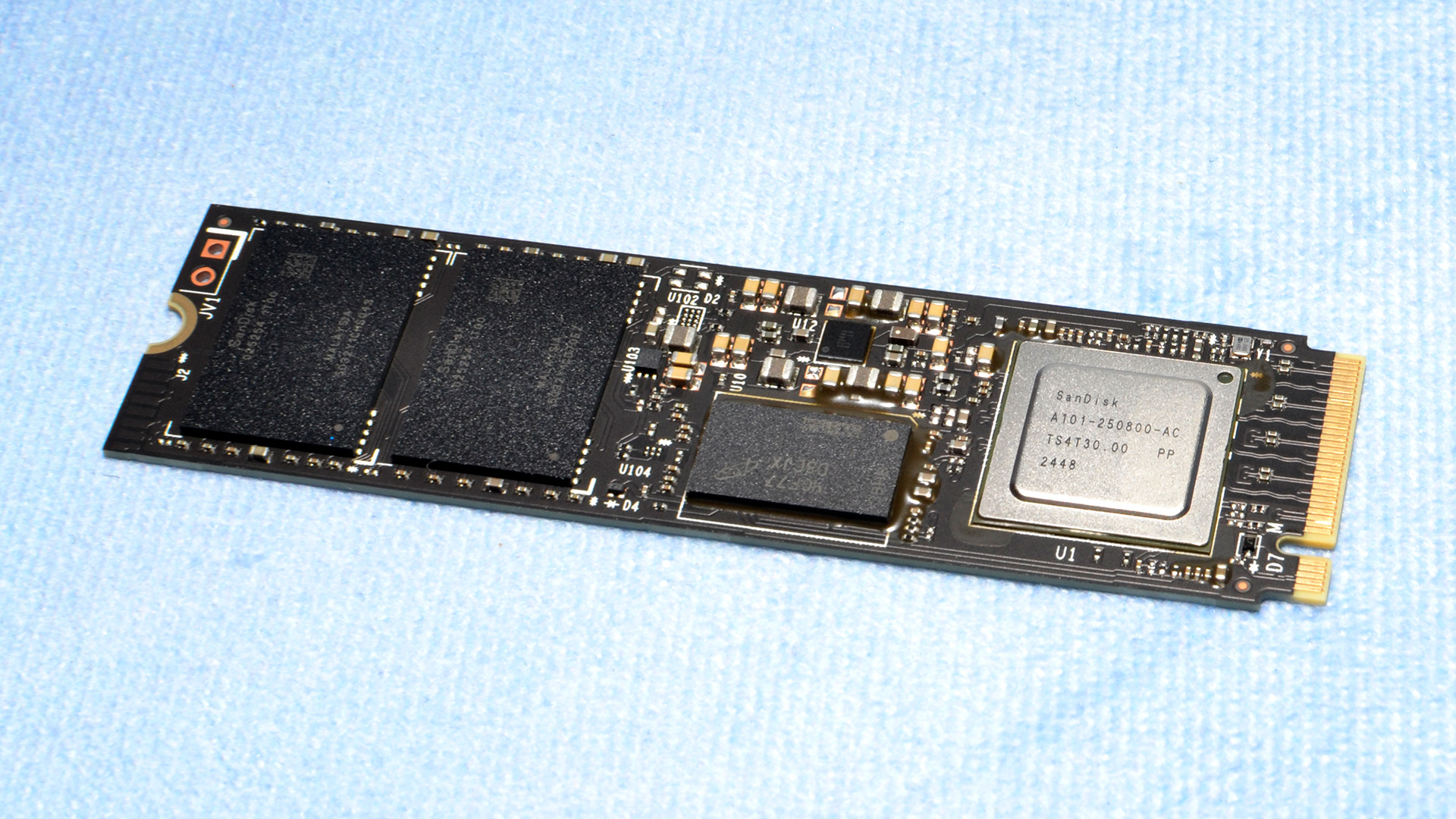
The WD Black SN8100’s SMI SM2508 controller is a departure from the proprietary solutions usually used by Sandisk. Luckily, this isn’t a serious negative, as the controller has proven itself to be very powerful and efficient. Unlike Phison’s E26, which is built in the 12nm node, the SM2508 is built in 6nm. This gives it some advantages, including the ability to use newer flash up to 3,600 MT/s. This helps more at smaller capacities to eke out maximum performance rather than just push at higher capacities, given that even the E26’s 2,400 MT/s is sufficient to saturate x4 PCIe 5.0 with eight flash channels. A higher interface rate can also lead to latency improvements, which are always welcome, providing a more responsive experience.
Not to leave Phison out in the cold, this also applies to its 7nm Phison E31T controller, which we tested with BiCS8 flash in the past. There is also the incoming Phison E28, which threatens to upend the current SSD landscape. So while the WD Black SN8100 may very well capture and hold the crown for now, it’s not and won’t be the only option in town, and may have some serious competition in the future. Especially as the SM2508 is not a proprietary part.
MORE: Best SSDs
MORE: Best External SSDs
MORE: Best SSD for the Steam Deck
- 1
- 2
Current page: Sandisk WD Black SN8100 Introduction
Next Page Sandisk WD Black SN8100 2TB Performance Results
Shane Downing is a Freelance Reviewer for Tom’s Hardware US, covering consumer storage hardware.